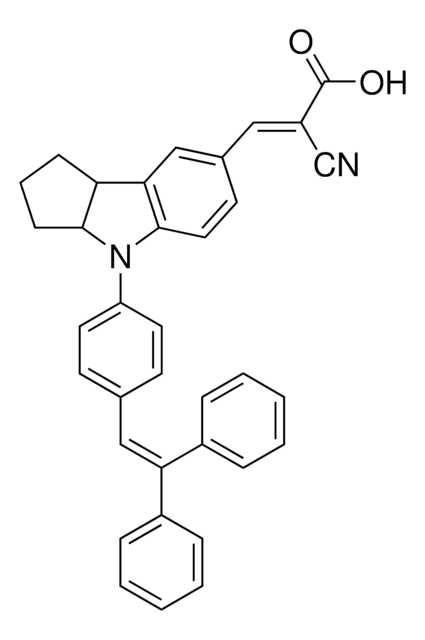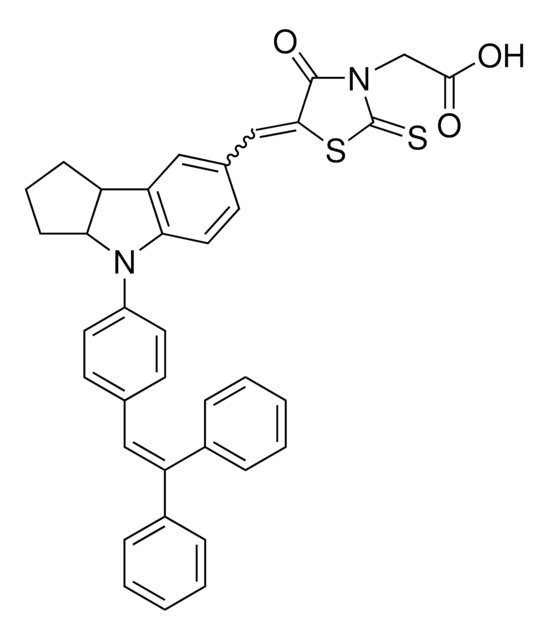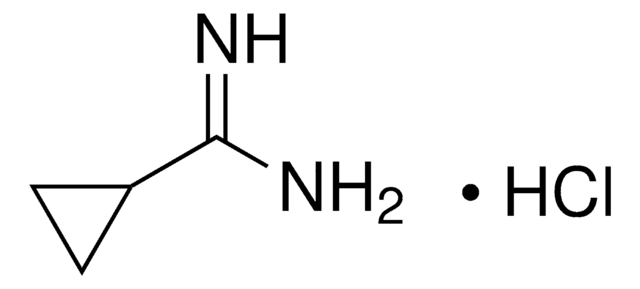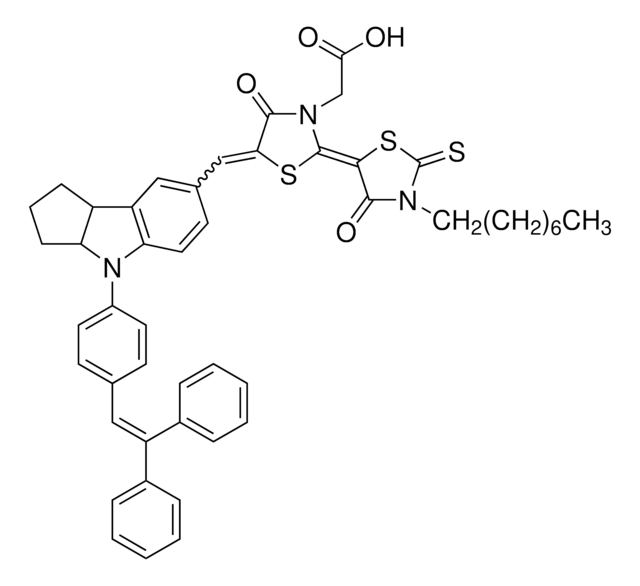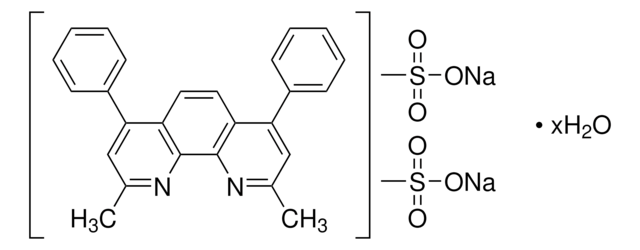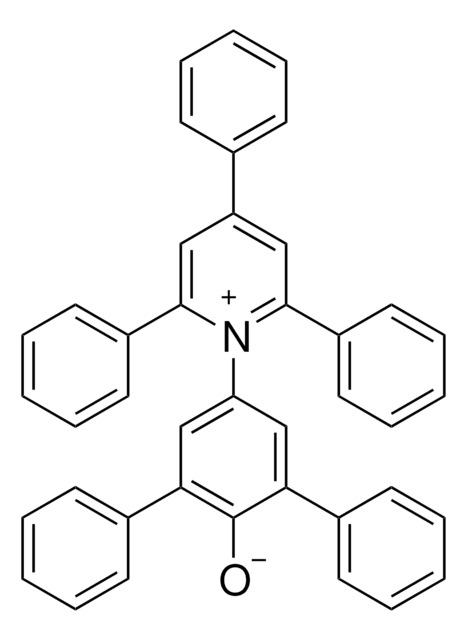736015
D149 Dye
98% (HPLC)
Synonyme(s) :
5-[[4-[4-(2,2-Diphenylethenyl)phenyl]-1,2,3-3a,4,8b-hexahydrocyclopent[b]indol-7-yl]methylene]-2-(3-ethyl-4-oxo-2-thioxo-5-thiazolidinylidene)-4-oxo-3-thiazolidineacetic acid, Indoline dye D149, Purple Dye
About This Item
Produits recommandés
Pureté
98% (HPLC)
Forme
solid
Pf
284-289 °C
λmax
531 nm
Chaîne SMILES
CCN1C(=S)SC(\C1=O)=C2\SC(=C/c3ccc4N(C5CCCC5c4c3)c6ccc(cc6)\C=C(\c7ccccc7)c8ccccc8)\C(=O)N2CC(O)=O
InChI
1S/C42H35N3O4S3/c1-2-43-40(49)38(52-42(43)50)41-44(25-37(46)47)39(48)36(51-41)24-27-18-21-35-33(23-27)31-14-9-15-34(31)45(35)30-19-16-26(17-20-30)22-32(28-10-5-3-6-11-28)29-12-7-4-8-13-29/h3-8,10-13,16-24,31,34H,2,9,14-15,25H2,1H3,(H,46,47)/b36-24-,41-38+
Clé InChI
OZFUEQNYOBIXTB-SJIUXOFISA-N
Description générale
Application
Jsc(mA/cm2) = 14.05
Fill factor − ff − 0.67
Efficiency − η − 6.67
Cell area: 0.25 cm2 (0.5 cm × 0.5 cm)
TiO2 Thickness: 5 μm
FTO glass: AGC Fabritec A11DU80
TiO2: screen printing (Catalysts & Chemicals IND. Co., Ltd.
PST−18NR/400C (4/1 mixture paste)
Electrolyte; 0.1 M LiI; 0.05 M I2; 0.6 M Dimethylpropylimidazolium
Iodide; 0.05 M t-Butylpyridine in 3-Methoxypropionitrile
Light source: AM1.5 1sun
Counter Electrode: Pt/Cr spatter glass
Dye adsorption: 30 °C/ in 3 hr. (t-BuOH/acetonitrile soln.)
Code de la classe de stockage
11 - Combustible Solids
Classe de danger pour l'eau (WGK)
WGK 3
Point d'éclair (°F)
Not applicable
Point d'éclair (°C)
Not applicable
Certificats d'analyse (COA)
Recherchez un Certificats d'analyse (COA) en saisissant le numéro de lot du produit. Les numéros de lot figurent sur l'étiquette du produit après les mots "Lot" ou "Batch".
Déjà en possession de ce produit ?
Retrouvez la documentation relative aux produits que vous avez récemment achetés dans la Bibliothèque de documents.
Les clients ont également consulté
Articles
Dye-sensitized solar cells (DSCs) are 3rd generation solar cells combining the promise of high efficiency with low production costs.
While dye sensitization as the basis for color photography has been accepted for a very long time,1 attempts to use this principle for the conversion of solar light to electricity generally had resulted only in very low photocurrents, below 100 nA/cm
Notre équipe de scientifiques dispose d'une expérience dans tous les secteurs de la recherche, notamment en sciences de la vie, science des matériaux, synthèse chimique, chromatographie, analyse et dans de nombreux autres domaines..
Contacter notre Service technique